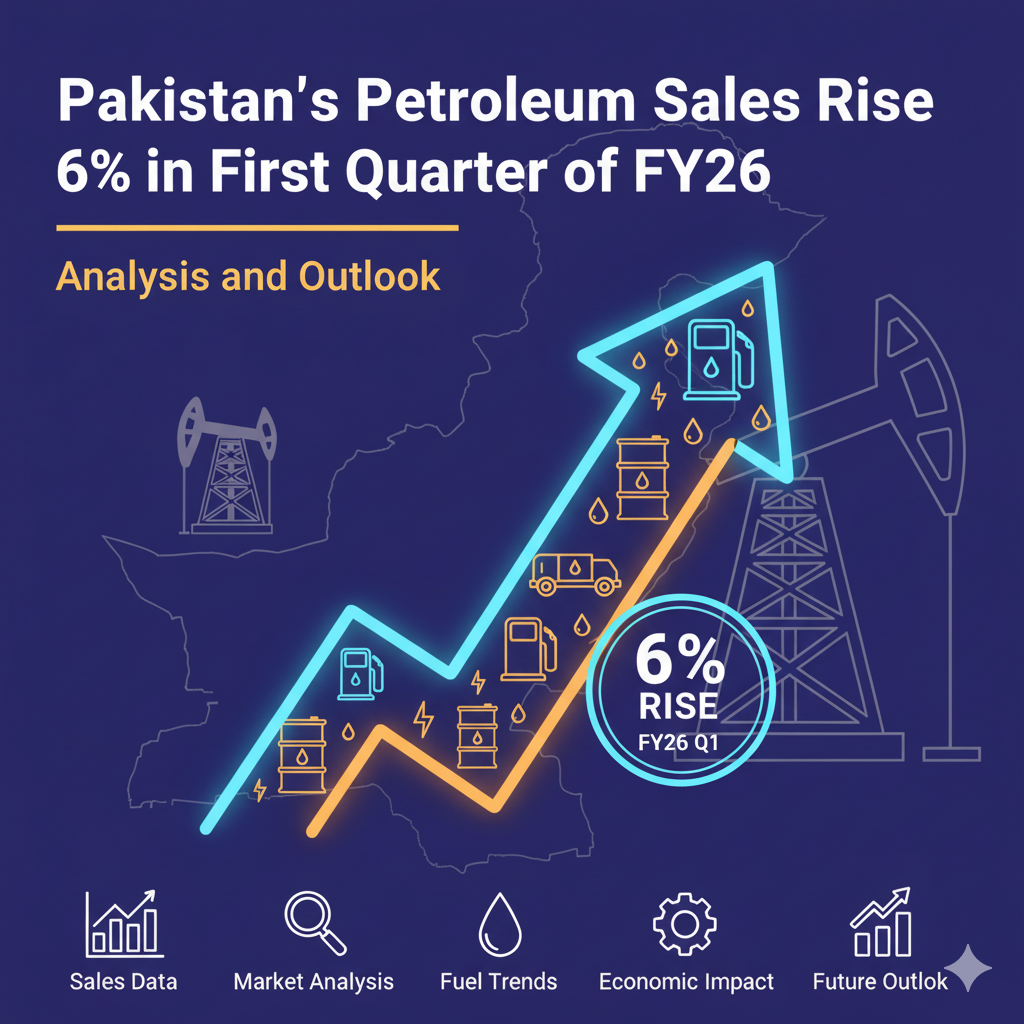Pakistan’s energy sector has shown encouraging signs of recovery in the first quarter of fiscal year 2026 (Q1 FY26), as petroleum product sales rose by 6% year-on-year (YoY). This uptick comes despite economic headwinds, high inflation, and volatility in global crude prices, signaling resilience in domestic demand and improved operational efficiencies across oil marketing companies (OMCs).
The growth trend reflects a mix of economic, seasonal, and policy-driven factors, particularly increased consumption of petrol and diesel, while furnace oil continued its structural decline.
Key Numbers at a Glance
- Total Sales Q1 FY26: ~3.7 million tons (6% YoY growth).
- Petrol (MS): Up 9% YoY, reflecting higher transport and private vehicle use.
- High-Speed Diesel (HSD): Up 7% YoY, driven by agricultural and logistics demand.
- Furnace Oil (FO): Declined 18% YoY, continuing its downward trajectory.
- Top Players: PSO, APL, and Shell Pakistan collectively dominated market share.
Product-Wise Performance
Motor Spirit (Petrol, MS)
Petrol consumption jumped by 9%, supported by:
- Rising car and bike ownership.
- A crackdown on Iranian smuggled fuel, which diverted demand to formal OMCs.
- Better economic mobility as inflation eased slightly compared to FY25.
High-Speed Diesel (HSD)
Diesel demand rose 7% YoY, largely due to:
- Seasonal agricultural activities (especially during Kharif harvesting).
- Improved logistics and goods transport.
- Increased industrial reliance on diesel-based backup generation during power shortages.
Furnace Oil (FO)
Furnace oil sales dropped 18% YoY, reflecting:
- Lower reliance on FO-based power generation due to LNG and coal availability.
- Policy-driven phase-out of FO as part of Pakistan’s long-term energy mix restructuring.
Company-Wise Breakdown
- Pakistan State Oil (PSO): Continued to lead with more than 50% market share, supported by strong retail presence and supply chain.
- Attock Petroleum Limited (APL): Reported double-digit growth in petrol and diesel sales due to its expanding network.
- Shell Pakistan: Gained moderately, though structural challenges remain as it prepares for divestment of its Pakistan operations.
- Smaller OMCs: Some benefited from regional demand surges, particularly in Punjab and Sindh.
Drivers Behind the 6% Growth
- Crackdown on Smuggling: The government’s stricter enforcement against smuggled Iranian fuel shifted volumes back to official OMC channels.
- Agricultural Demand: High diesel consumption during the Kharif crop cycle boosted sales.
- Seasonal Mobility: Festive travel and increased inter-city movement added to petrol demand.
- Macroeconomic Stabilization: While challenges remain, relative stability in the rupee and improved supply chain efficiency supported the sector.
- Industrial Dependence on Diesel: With lingering power outages, industries leaned on diesel gensets for uninterrupted operations.
Risks and Challenges
Despite the recovery, petroleum sales face several risks:
- Global Crude Price Volatility: Any spike in Brent crude above $90/barrel could raise domestic fuel prices, hurting demand.
- Exchange Rate Pressure: Depreciation of the Pakistani rupee could inflate import bills for OMCs.
- Policy Shifts: Government’s push toward renewable energy and LNG-based generation could reduce long-term demand for fossil fuels.
- Inflationary Pressures: Consumer purchasing power remains fragile, limiting upside growth.
Future Outlook for FY26
Analysts expect petroleum sales to maintain a modest upward trajectory in FY26 if:
- Economic growth stabilizes around 3%.
- Government sustains enforcement against smuggled fuel.
- Agriculture remains strong with back-to-back crop cycles.
However, furnace oil demand will likely keep declining, while petrol and diesel will remain the backbone of Pakistan’s fuel mix until electric vehicle (EV) adoption scales up.
In the medium term, Pakistan’s energy landscape is set to diversify toward LNG, hydropower, and renewables, which could gradually reshape petroleum sales dynamics.
Conclusion
The 6% growth in Pakistan’s petroleum sales in Q1 FY26 is a positive signal for both the energy sector and the economy. While challenges such as global oil price volatility and structural shifts in the energy mix remain, strong petrol and diesel demand underline the resilience of domestic consumption.
Oil marketing companies are likely to benefit from continued enforcement against smuggling, steady agriculture demand, and rising transport needs. The sector’s performance in FY26 will be closely tied to macroeconomic stability, government policies, and global crude market trends.
For now, the rebound reflects a cautiously optimistic outlook for Pakistan’s petroleum market.







